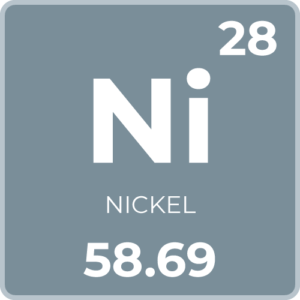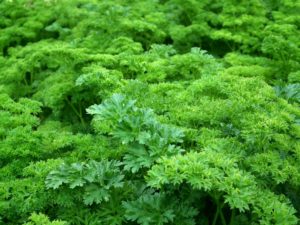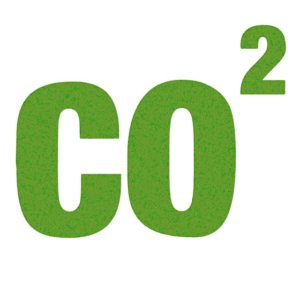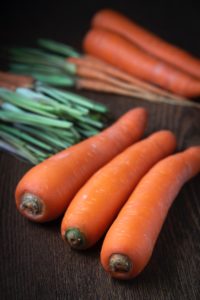Of all the nutrients in the NPK formula, the most well known (and possibly most celebrated) is certainly nitrogen. For plants, this element really makes everything possible, especially photosynthesis. The main reason is that chlorophyll, a major component necessary for photosynthesis, is heavily composed of nitrogen. It’s also important for plants to be able to make proteins, since it’s part of the amino acids necessary for life.
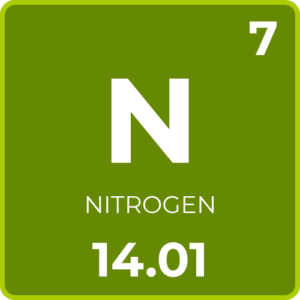
Main Functions of Nitrogen in Plants:
Nitrogen serves many functions throughout the plant life cycle. However, some of these are more crucial to life than others. Here are the main roles nitrogen plays for plants:
- Helps form amino acids, and therefore proteins
- Major part of chlorophyll, needed for photosynthesis
- Ultimately aids in the formation of new plant tissues and growth
- Allows plants to convert sunlight to energy (aka food, starches, and sugars)
- Increases plant protein content
- Especially important during vegetative growth stages
- Key element in the nitrogen cycle
How Plants Get Nitrogen
Plants do naturally obtain nitrogen when they’re growing in the soil. However, it can be confusing conversation when it comes to how plants get it, naturally. The majority of our atmosphere, and breathable air, is actually saturated with nitrogen. There’s no doubt it’s an abundant resource. That said, plants don’t get nitrogen from the air like they do hydrogen and oxygen.
The good news is that whether or not the plant has taken up nitrogen, it’s an extremely mobile nutrient. In hydroponic systems, you have more control over how much nitrogen is available to your plants. Even in soil, nitrogen tends to be plentiful. The issue for plants really comes down to how nitrogen molecules pair up. Nitrogen molecules naturally form strong bonds with one another. This creates an N₂ molecule. Unfortunately, this combination is difficult for plants to take in.
In soil, bacteria and other organisms convert the N₂ molecule to a form plants can take in, namely ammonia. This process is called nitrogen fixation, or fixing nitrogen. To create the ammonia molecule (molecular formula NH₃), the two nitrogen molecules are separated, and each is bonded to three hydrogen molecules (the ‘H’ part of the molecular formula). This process breaks the otherwise strong bond between each nitrogen molecule, and forces each molecule to make a stronger bond between three hydrogen molecules.
In nutrient solution, nitrogen is already in a form that plants can easily absorb through their roots. As a result, hydroponic growers really don’t need to worry about if they can take the form nitrogen is in. However, some nutrient excesses, or pH imbalances, can make it difficult for plants to take in nitrogen. If you’re growing in water culture, keeping an ideal and balanced environment is key to nutrient uptake.
Excess and Deficiency
When it comes to nutrient excess, nitrogen doesn’t present all the same symptoms and problems as other elements. Because nitrogen is the key element to plant growth, it can also cause them to grow too much. Nitrogen excess can cause plants to bulk up in a big way. However, that does come at a cost. All the new growth and stems aren’t as strong as they would be if allowed to grow at a more natural rate. Yes, it does result in some overgrowth, but that overgrowth isn’t as strong as it should be.
The other issue with nitrogen excess has less to do with plant growth, and more to do with how the surrounding organisms react to the plant. Give your plants too much nitrogen, and they just might end up becoming a magnet for diseases and other pests.
What about nitrogen deficiency?
Nitrogen deficiency is easier to diagnose than nitrogen excess. Like with any other element, the signs of deficiency can easily be mistaken for other issues. Especially other nutrient deficiencies. However, nitrogen is the main priority for most plants, and as such, the signs of deficiency are easier to figure out.
Here are the main signs of deficiency for nitrogen in plants:
- Chlorosis (yellowing, especially in leaves but also occurring throughout the plant)
- Stunted growth
- Symptoms (mainly chlorosis) appearing in older leaves
- Pale green leaves
- Buds that don’t flower or fruit
- Inward leaf curl (in severe cases)
Note: While some plants show general chlorosis when they have a nitrogen deficiency, others show it in specific parts.
